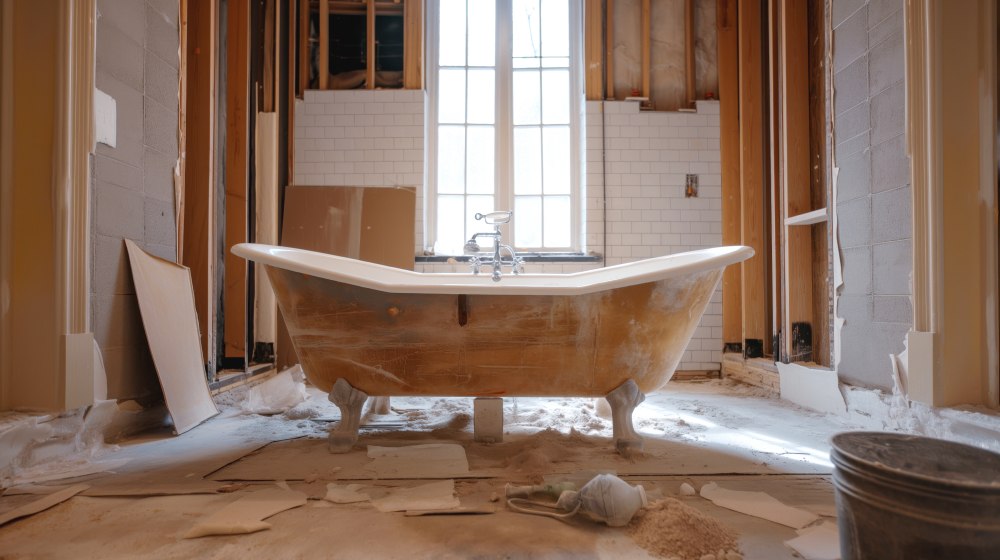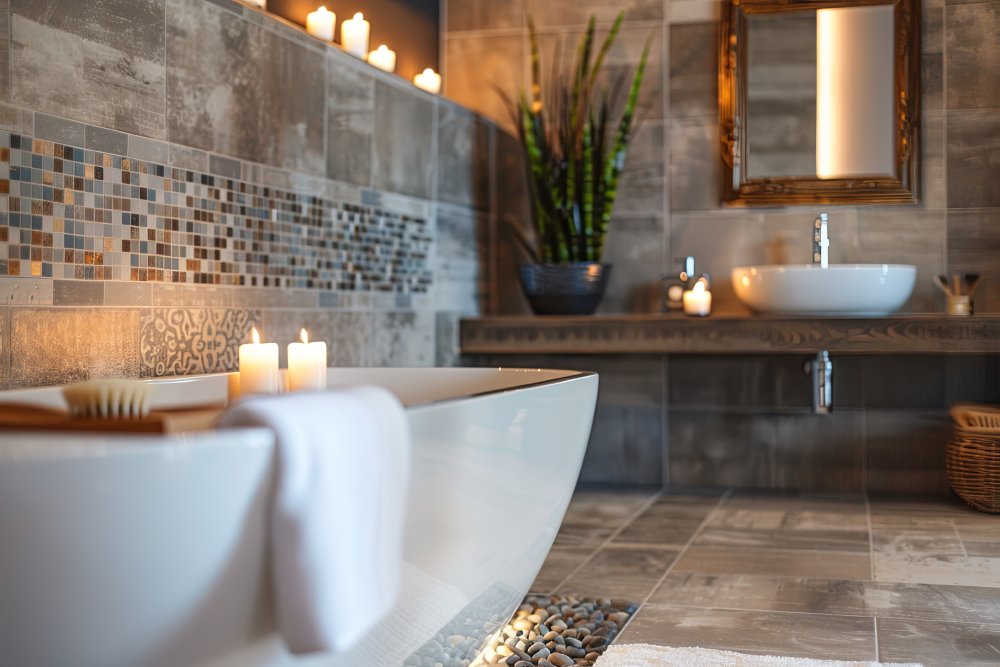Renovating a bathroom is one of the most rewarding home improvement projects. A well-executed bathroom renovation can enhance the functionality and aesthetics of your space, increase your home’s value, and provide a refreshing retreat for you and your family. However, it can also be a complex and challenging process that requires careful planning and execution. This step-by-step guide will help you navigate through each stage of planning a successful bathroom renovation.
1. Assess Your Needs and Define Your Goals
- Overview: Before starting your bathroom renovation, it’s crucial to understand your needs and define your goals. This will provide a clear direction for your project and help you make informed decisions.
- Identify Pain Points: Consider what you dislike about your current bathroom and what improvements you’d like to see. Common issues include lack of storage, poor lighting, outdated fixtures, and inefficient layout.
- Set Clear Goals: Define what you want to achieve with the renovation. Goals might include increasing storage, improving accessibility, enhancing aesthetics, or upgrading fixtures for better efficiency.
- Consider Future Needs: Think about how your needs might change over time. For instance, if you plan to age in place, you may want to incorporate universal design principles.
- Create a Wish List: Write down all the features and changes you’d like to see in your new bathroom.
- Prioritize: Rank your goals and needs in order of importance to help guide your decisions.
2. Establish a Budget
- Overview: Setting a realistic budget is a critical step in the planning process. Your budget will determine the scope of your project and help you make informed choices about materials, fixtures, and labor.
- Research Costs: Look into the average costs of bathroom renovations in your area. This includes materials, labor, permits, and unexpected expenses.
- Allocate Funds: Break down your budget into categories such as fixtures, flooring, lighting, plumbing, and labor. Allocate funds to each category based on your priorities.
- Include a Contingency: Set aside 10-20% of your budget for unexpected costs that may arise during the renovation.
- Get Multiple Quotes: Obtain quotes from several contractors to get a realistic idea of costs.
- Track Expenses: Keep a detailed record of all expenditures to ensure you stay within your budget.
3. Create a Design Plan
- Overview: A well-thought-out design plan is essential for a successful bathroom renovation. It helps you visualize the final result and ensures that all elements work together harmoniously.
- Measure Your Space: Accurately measure the dimensions of your bathroom, including the location of windows, doors, and existing fixtures.
- Choose a Layout: Decide on the best layout for your bathroom. Consider factors such as plumbing and electrical constraints, traffic flow, and accessibility.
- Select a Style: Choose a design style that complements the rest of your home. Popular styles include modern, traditional, minimalist, and rustic.
- Pick Materials and Fixtures: Select materials and fixtures that align with your design style and budget. This includes tiles, countertops, vanities, sinks, faucets, and lighting.
- Use Design Tools: Utilize design software or apps to create a 3D model of your bathroom. This can help you visualize the space and make adjustments as needed.
- Seek Inspiration: Look for inspiration in magazines, websites, and social media platforms like Pinterest and Instagram.
Join HICP Homeowner’s Alliance
Connect with experts, get special discounts and enjoy member benefits
4. Hire Professionals
- Overview: Hiring the right professionals is crucial for the success of your bathroom renovation. They bring expertise, experience, and skills to the project, ensuring high-quality results.
- Research Contractors: Look for reputable contractors with experience in bathroom renovations. Check their credentials, read reviews, and view their portfolio of completed projects.
- Conduct Interviews: Interview potential contractors to discuss your project, ask about their process, and gauge their communication skills.
- Get Detailed Quotes: Request detailed quotes from several contractors, including a breakdown of costs for materials, labor, and any additional fees.
- Check References: Ask for references from past clients and follow up to get feedback on their experience with the contractor.
- Verify Licensing and Insurance: Ensure that the contractor is licensed and insured to protect yourself from liability.
- Sign a Contract: Once you’ve chosen a contractor, sign a detailed contract outlining the scope of work, timeline, payment schedule, and warranty information.
5. Obtain Necessary Permits
- Overview: Permits are often required for bathroom renovations, especially if you’re making structural changes, updating plumbing or electrical systems, or altering the layout.
- Check Local Requirements: Contact your local building department to find out which permits are needed for your renovation.
- Apply for Permits: Submit the necessary applications and pay any associated fees. Your contractor may handle this process on your behalf.
- Schedule Inspections: Arrange for inspections at various stages of the renovation to ensure compliance with building codes and regulations.
- Plan Ahead: Obtaining permits can take time, so start the process early to avoid delays.
- Keep Records: Maintain copies of all permits and inspection reports for your records.
6. Prepare for Demolition
- Overview: Preparing for demolition involves clearing the bathroom and taking steps to protect other areas of your home from dust and debris.
- Remove Belongings: Clear the bathroom of all personal items, furniture, and accessories.
- Set Up a Temporary Bathroom: If your home has only one bathroom, set up a temporary bathroom area with essentials.
- Protect Surrounding Areas: Use plastic sheeting, painter’s tape, and drop cloths to protect adjacent rooms and flooring from dust and debris.
- Dispose of Debris: Arrange for a dumpster or waste removal service to handle demolition debris.
- Safety First: Ensure that proper safety measures are in place, including wearing protective gear and turning off utilities as needed.
7. Demolition and Rough-In Work
- Overview: Demolition involves removing existing fixtures, flooring, and walls as necessary. Rough-in work includes plumbing, electrical, and framing changes required for the new layout.
- Turn Off Utilities: Turn off water, electricity, and gas to the bathroom to ensure safety during demolition.
- Demolish Carefully: Remove fixtures, tiles, flooring, and walls as needed. Take care to avoid damaging plumbing and electrical systems.
- Complete Rough-In Work: Update plumbing and electrical systems to accommodate new fixtures and layout. This may involve moving pipes, adding electrical outlets, and installing new lighting circuits.
- Follow Codes: Ensure all rough-in work complies with local building codes and regulations.
- Schedule Inspections: Have rough-in work inspected before proceeding to the next stage.
8. Install Flooring and Walls
- Overview: Installing flooring and walls provides the foundation for the rest of the renovation. Choose durable and moisture-resistant materials for these areas.
- Install Subfloor: Ensure the subfloor is level and secure before installing new flooring.
- Lay Flooring: Install the chosen flooring material, whether it’s tile, vinyl, laminate, or another option. Follow manufacturer guidelines for installation.
- Install Walls: If you’ve removed walls, install new drywall or backer board. Ensure walls are plumb and smooth.
- Use Moisture-Resistant Materials: Opt for moisture-resistant drywall or cement board in areas prone to water exposure, such as around the shower and tub.
- Consider Radiant Heating: If installing tile flooring, consider adding radiant heating for added comfort.
9. Install Fixtures and Features
- Overview: Installing fixtures and features is a key stage in the renovation process. This includes installing the bathtub, shower, toilet, vanity, sinks, and lighting.
- Install Bathtub and Shower: Place the bathtub and/or shower in the designated space. Connect plumbing and ensure proper drainage.
- Install Toilet: Set the toilet in place, secure it, and connect it to the plumbing.
- Install Vanity and Sinks: Position the vanity and sinks, secure them, and connect plumbing.
- Install Lighting: Install overhead lighting, vanity lights, and any additional fixtures.
- Seal Joints: Use silicone caulk to seal joints around fixtures to prevent water leakage.
- Test Fixtures: Test all plumbing fixtures to ensure they function properly and check for leaks.
10. Finishing Touches
- Overview: Finishing touches bring the renovation together and add the final layer of style and functionality.
- Paint Walls: Choose a high-quality, moisture-resistant paint and apply it to the walls.
- Install Accessories: Add towel bars, hooks, mirrors, and other accessories.
- Add Decor: Incorporate decorative elements such as artwork, plants, and rugs to personalize the space.
- Coordinate Finishes: Ensure that the finishes of accessories and decor items complement the overall design.
- Quality Over Quantity: Opt for a few high-quality decor pieces rather than cluttering the space with too many items.
Planning a bathroom renovation requires careful consideration and meticulous execution.By following this step-by-step guide, you can ensure a successful renovation that meets your needs, fits your budget, and enhances the beauty and functionality of your home. Remember to assess your needs, establish a budget, create a detailed design plan, hire experienced professionals, and pay attention to every detail throughout the process. With thoughtful planning and execution, you can transform your bathroom into a luxurious and functional retreat that you and your family will enjoy for








